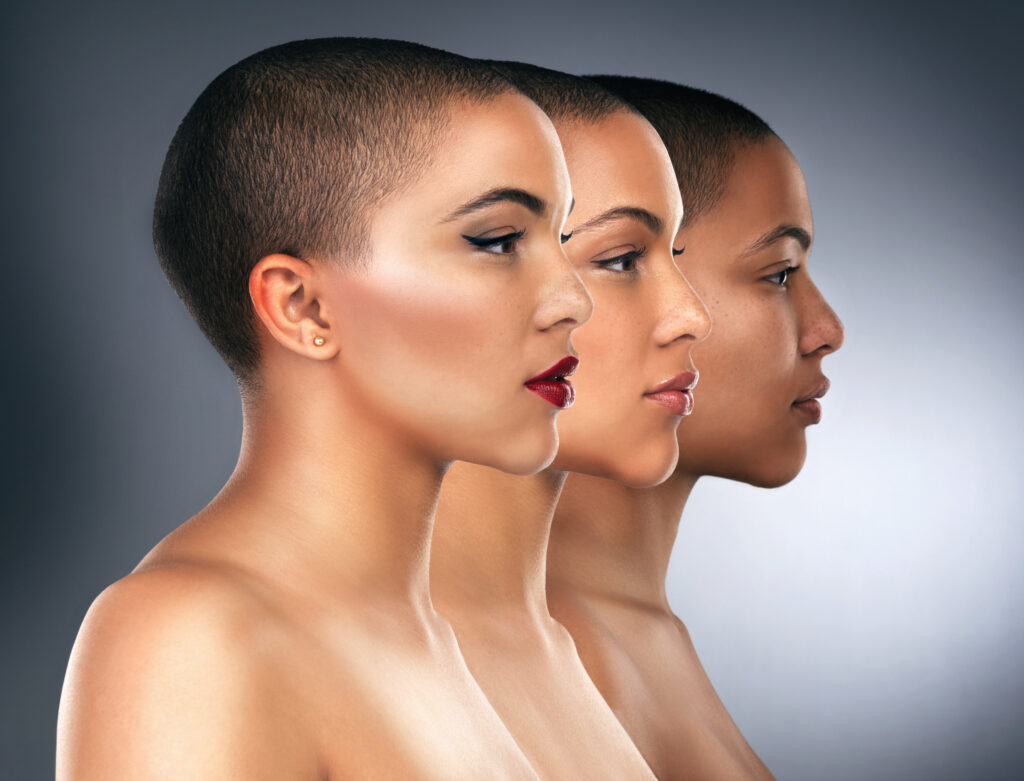For many women, losing hair during chemotherapy is one of the most emotionally challenging parts of treatment. So when hair starts growing back, it can feel like a beacon of hope—a sign of recovery and renewal. But hair regrowth isn’t always straightforward. It can come with its own set of surprises and concerns. Understanding what to expect can help ease anxieties and make this next phase a little more manageable.g
The Basics of Post-Chemo Hair Regrowth
Chemotherapy targets rapidly dividing cells, including those in your hair follicles. Once treatment ends, those follicles begin to repair and reactivate—but the process isn’t instant.
Most people can expect:
- 3–4 weeks post-treatment: Fine, soft fuzz may begin appearing on your scalp.
- 1–2 months in: The fuzz becomes more noticeable; your hair might come in with a different color or texture than before.
- 2–3 months: Hair thickens enough for short hairstyles.
- 6–12 months: You may have several inches of hair growth, often enough for styling and shaping into a longer cut.
It’s important to note that hair regrowth varies by individual, depending on your health, treatment, and even genetics. Some people experience temporary changes—like straighter or curlier hair—that may or may not revert over time.
For an in-depth timeline and what you can do to support healthy regrowth, check out our guide: How to Grow My Hair Again.
Taking Care of New Hair and Your Scalp
New hair is delicate. Treating your scalp and growing strands with care can make a big difference in how comfortable and confident you feel.
- Use gentle, fragrance-free shampoo to avoid irritation.
- Moisturize your scalp with lightweight, non-greasy products.
- Avoid heat styling and chemical treatments—your new hair is more vulnerable.
- Protect your scalp from sun exposure with hats or scalp-friendly sunscreen.
Many women also find that scalp massage is soothing and encourages circulation, which may support regrowth. You can learn more about coping during this phase in our article on how to deal with hair loss from chemotherapy.
What About Hair Growth Products?
Some women consider using topical or oral hair regrowth treatments like minoxidil (Rogaine) or finasteride to speed up results. While these treatments are widely used in hair loss cases, they should be approached with caution after chemotherapy.
- Minoxidil is a topical solution that can stimulate hair growth by increasing blood flow to hair follicles. It’s generally considered safe for women and is available over the counter. Some doctors may recommend it a few months after chemo, once the scalp has healed and regrowth has started.
- Finasteride is an oral medication more commonly used for male pattern baldness. It’s not typically recommended for women, especially those who are pregnant or may become pregnant, due to risk of birth defects and hormonal side effects.
Before starting any hair growth product, consult your oncologist or dermatologist to make sure it’s safe and appropriate for your unique recovery path.

Choosing a Head Shaving Style (If You Haven’t Yet)
Some women decide to shave their heads before or during treatment for a sense of control or to avoid shedding. If you’re still in that decision-making process, you might be wondering: buzzcut or clean shave?
Each style has its benefits:
- Buzzcuts are quick, low-maintenance, and preserve some scalp protection.
- Clean shaves offer a smooth finish and can feel liberating for some.
Your choice depends on comfort, care preferences, and how you want to experience this chapter. Check out our detailed guide: Buzzcut or Clean Shave for Women: Which Head Shaving Style to Choose.
Styling and Confidence During Regrowth
The regrowth stage can be unpredictable, and styling may feel like a challenge. Here are a few ways to feel more in control:
- Rock a pixie or crop: Embrace short styles that flatter your face and texture.
- Try scarves or headbands: These can add color, personality, and coverage if you’re still feeling self-conscious.
- Use wigs or hairpieces if you want to ease the transition or change your look instantly.
This stage can be emotional, too. Be patient with yourself. Celebrate the small milestones—every half inch counts!
Embracing the Emotional Journey
Hair regrowth after chemo isn’t just physical—it’s emotional, too. You may feel joy, frustration, anxiety, or even grief over the changes.
It helps to:
- Talk openly with family and friends.
- Join a support group or connect with other survivors.
- Seek counseling if your self-esteem is taking a hit.
And above all—be gentle with yourself. You’ve come through so much already.
You’re Not Alone
Hair regrowth is a powerful sign of healing, but it comes with its own ups and downs. At Front Room Underfashions, we’re here to support you through every phase of your journey—from choosing the right headwear and balms to helping you feel beautiful in your own skin.
Have questions or need help finding products that support your regrowth journey? Contact us or stop by our store at:
Front Room Underfashions
727 Lincoln Court Ste B
Lansing, MI 48917
You’ve made it through treatment—now let us help you feel like yourself again, one strand at a time.
